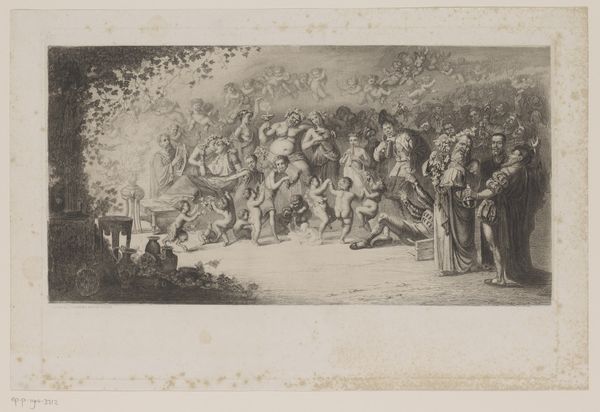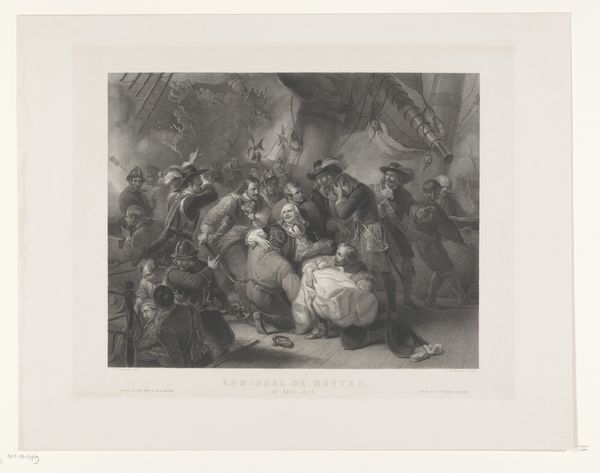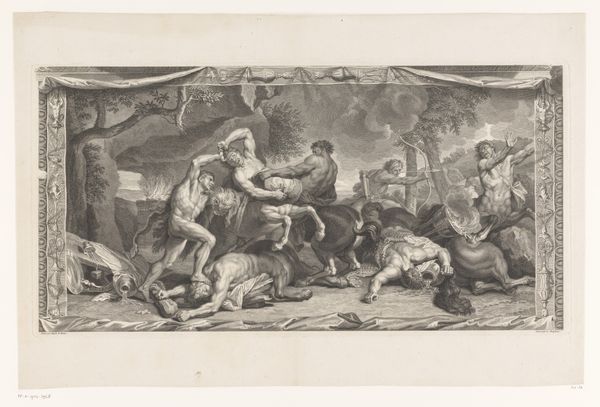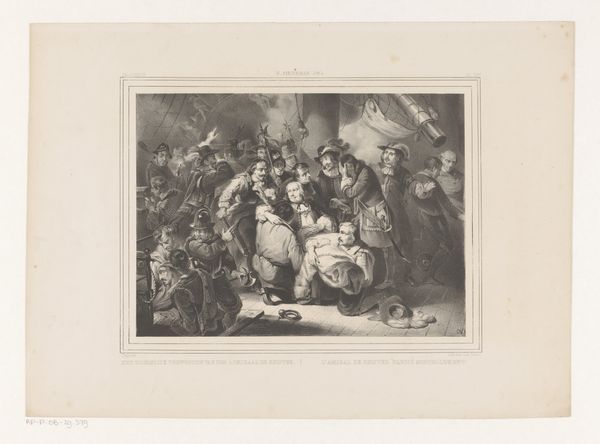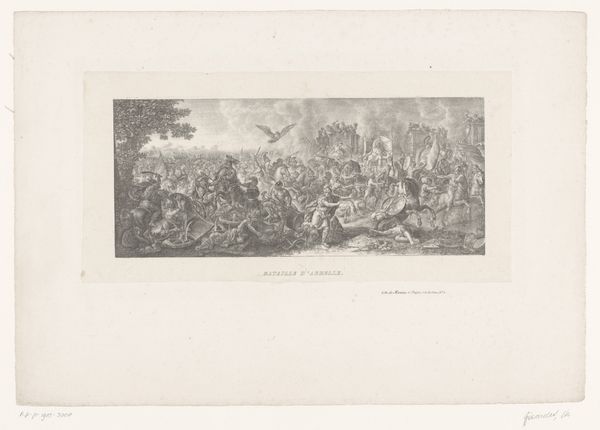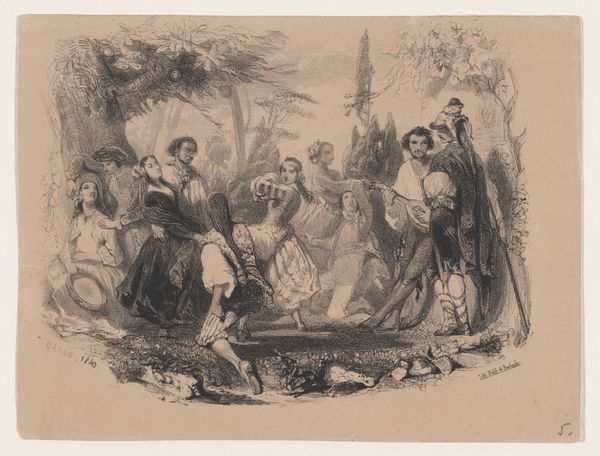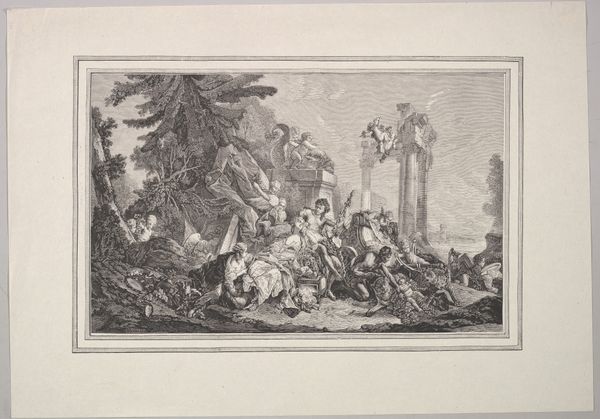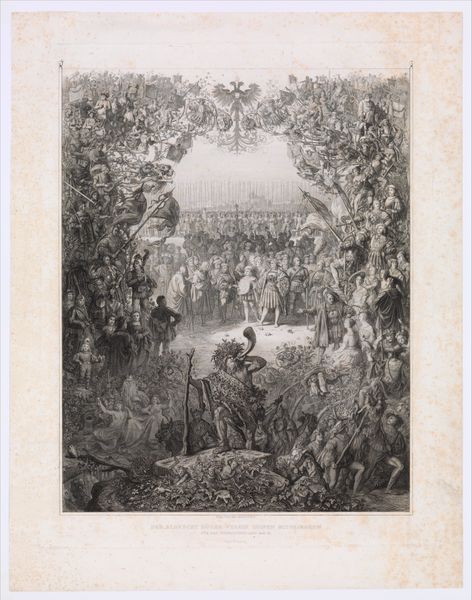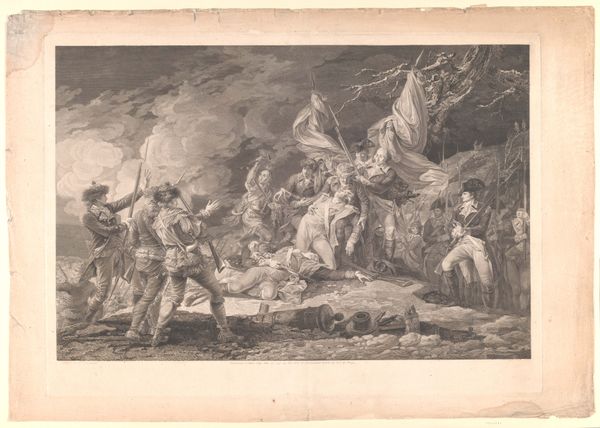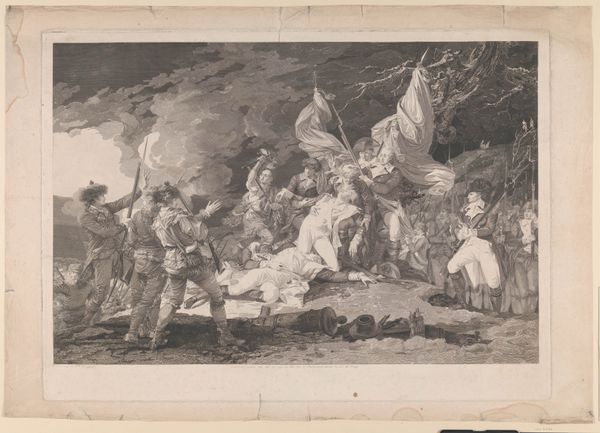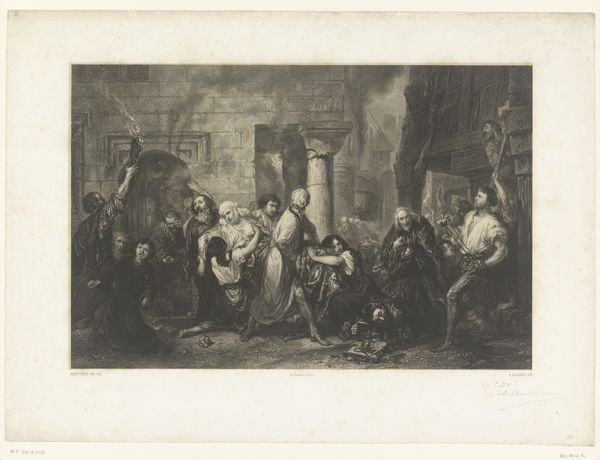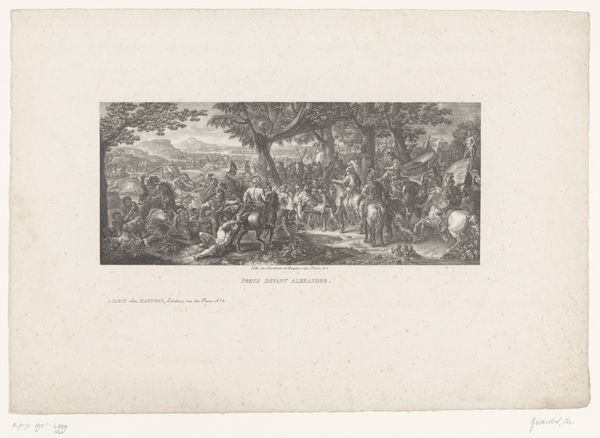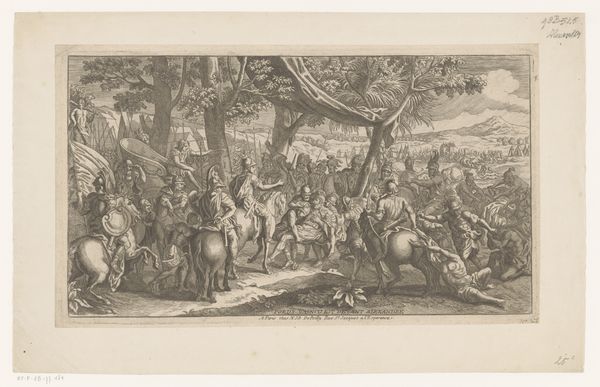
Allegorie op de liefde met centraal twee opstijgende engelen in een halve cirkel van putti 1856
0:00
0:00
Dimensions: height 256 mm, width 338 mm
Copyright: Rijks Museum: Open Domain
This print was made by Léopold Flameng in the 19th century, using a technique called etching. Etching involves coating a metal plate with a waxy, acid-resistant substance, then scratching an image into the wax. When the plate is dipped in acid, the exposed metal is eaten away, creating lines. The beauty of etching lies in the artist's control over the depth and quality of the lines. Flameng likely used a variety of tools to achieve the delicate details and tonal gradations we see here. The process involves considerable labour, from preparing the plate, to the physical act of incising lines, to printing. The resulting image, with its intricate lines and textures, bears the marks of Flameng's hand and the physical effort invested in its creation. Prints like this were part of a booming industry at the time, catering to a growing middle class with an appetite for art. It represents a fascinating intersection of artistic skill, industrial production, and consumer culture. Paying attention to these material facts allows us to appreciate the artwork's full significance.
Comments
No comments
Be the first to comment and join the conversation on the ultimate creative platform.
